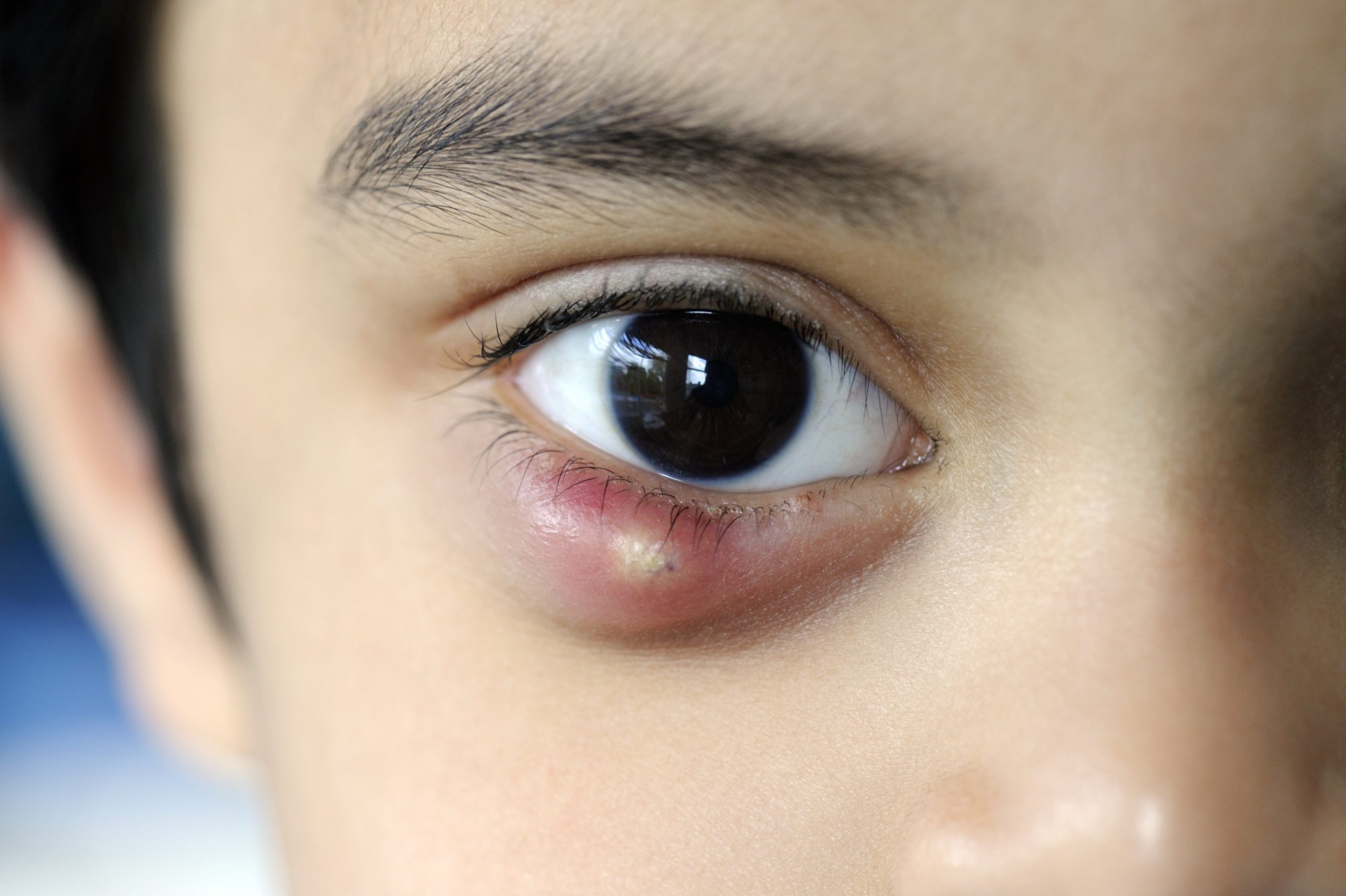
Stye, an eye inflammation that affects young and old alike
Have you ever felt an almost stinging discomfort in your eyelids and woken up the next morning with a swollen and reddened eye? If you have, it was most likely a stye
But what is a stye? How does it manifest itself and, above all, how is it treated?
Stye is an acute inflammation of the glands located at the level of the eyelashes.
It often affects the outer part of the eyelid although, in some cases, it can also affect the glands on the inside.
It is an inflammation of bacterial origin whose main culprits are S. Aureus, a commensal bacterium of the human microbiota, and the parasite Demodex.
Under what conditions does it occur?
Styes mainly affect those suffering from dry eye and inflammation of the eyelid margin (chronic anterior blepharitis).
These conditions are particularly common in people suffering from skin diseases such as Atopic Dermatitis or Rosacea.
How does stye occur?
Stye appears as a localised, reddened and painful nodule at the edge of the eyelid.
It is often possible for purulent material to come out of the stye, and in more extreme cases, the inflammation may even involve the adjacent orbital tissues (pre-septal cellulitis).
Is it contagious?
There is no scientific evidence that stye is contagious.
However, since the cause is often infectious, it is advisable to take appropriate preventive measures, such as proper hand hygiene and avoiding direct contact with the inflamed area.
How is it treated?
Most styes resolve spontaneously within 1-2 weeks and do not require any specific intervention.
To facilitate healing, proper eyelid hygiene and the application of warm moist compresses to the affected area is recommended.
In some cases, topical antibiotic therapy may be recommended.
In rare cases, topical therapy with steroid drugs may be combined to reduce inflammation more quickly, but only on the advice of and closely monitored by the ophthalmologist.
In more persistent cases, a surgical approach may be necessary to remove the stye.
What to avoid with stye?
Constantly touching the affected area without proper hand hygiene can worsen the situation, facilitating the spread of inflammation.
It is advisable to avoid using cosmetics or do-it-yourself remedies.
Regular follow-up with the ophthalmologist is also necessary to monitor the progress of the condition and avoid unpleasant complications.
Can it also occur in children? How is it treated?
Yes, stye can also occur in children.
Children should be taught not to rub their eyes and to wash their face and hands frequently.
Are stye and chalazion the same thing?
Although they are often mistakenly used as synonyms, they are not the same clinical entity.
The term ‘Chalazion’ refers to an eyelid nodule resulting from obstruction of the sebaceous glands of the eyelid.
It differs from a stye, which instead results from acute purulent inflammation of the eyelid.
Read Also
Emergency Live Even More…Live: Download The New Free App Of Your Newspaper For IOS And Android
Blepharitis: The Inflammation Of The Eyelids
Burning Eyes: Symptoms, Causes And Remedies
Corneal Abrasions And Foreign Bodies In The Eye: What To Do? Diagnosis And Treatment
Wound Care Guideline (Part 2) – Dressing Abrasions And Lacerations
Contusions And Lacerations Of The Eye And Eyelids: Diagnosis And Treatment
Macular Degeneration: Faricimab And The New Therapy For Eye Health
First Aid For Dehydration: Knowing How To Respond To A Situation Not Necessarily Related To The Heat
Hydration: Also Essential For The Eyes
What Is Aberrometry? Discovering The Aberrations Of The Eye
Red Eyes: What Can Be The Causes Of Conjunctival Hyperemia?
4 Reasons To Seek Emergency Care For Vision Symptoms
Ophthalmology: Causes, Symptoms And Treatment Of Astigmatism
Pupillary Reflex To Light: Mechanism And Clinical Significance
Cataract: Symptoms, Causes And Intervention
Inflammations Of The Eye: Uveitis
Corneal Keratoconus, Corneal Cross-Linking UVA Treatment
Myopia: What It Is And How To Treat It
Presbyopia: What Are The Symptoms And How To Correct It
Blepharoptosis: Getting To Know Eyelid Drooping
Blepharitis: What Is It And What Are The Most Common Symptoms?
Essential Blepharospasm: What It Is And What It Can Be A Symptom Of
Stye Or Chalazion? The Differences Between These Two Eye Diseases


